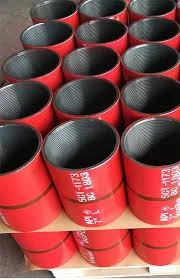- Afrikaans
- Albanian
- Amharic
- Arabic
- Armenian
- Azerbaijani
- Basque
- Belarusian
- Bengali
- Bosnian
- Bulgarian
- Catalan
- Cebuano
- Corsican
- Croatian
- Czech
- Danish
- Dutch
- English
- Esperanto
- Estonian
- Finnish
- French
- Frisian
- Galician
- Georgian
- German
- Greek
- Gujarati
- Haitian Creole
- hausa
- hawaiian
- Hebrew
- Hindi
- Miao
- Hungarian
- Icelandic
- igbo
- Indonesian
- irish
- Italian
- Japanese
- Javanese
- Kannada
- kazakh
- Khmer
- Rwandese
- Korean
- Kurdish
- Kyrgyz
- Lao
- Latin
- Latvian
- Lithuanian
- Luxembourgish
- Macedonian
- Malgashi
- Malay
- Malayalam
- Maltese
- Maori
- Marathi
- Mongolian
- Myanmar
- Nepali
- Norwegian
- Norwegian
- Occitan
- Pashto
- Persian
- Polish
- Portuguese
- Punjabi
- Romanian
- Russian
- Samoan
- Scottish Gaelic
- Serbian
- Sesotho
- Shona
- Sindhi
- Sinhala
- Slovak
- Slovenian
- Somali
- Spanish
- Sundanese
- Swahili
- Swedish
- Tagalog
- Tajik
- Tamil
- Tatar
- Telugu
- Thai
- Turkish
- Turkmen
- Ukrainian
- Urdu
- Uighur
- Uzbek
- Vietnamese
- Welsh
- Bantu
- Yiddish
- Yoruba
- Zulu
Understanding the Function and Purpose of a Pup Joint in Oil and Gas Industry
What is a Pup Joint?
In the world of oil and gas drilling, specialized terminology is commonplace, and one such term is pup joint. Understanding what a pup joint is, along with its function and importance in drilling operations, can provide insight into the complexities of the oil and gas industry.
Definition of a Pup Joint
A pup joint is a length of pipe that is typically shorter than standard lengths of pipe, which are often 30 feet (about 9 meters) long. Pup joints can range in length anywhere from a few inches to several feet, and they are specifically designed to be used in various applications where a standard length of pipe would be too long or impractical. The term pup hints at this piece being a smaller version of a larger pipe segment, akin to how a pup is a smaller version of a dog.
Purpose of a Pup Joint
Pup joints serve several critical purposes in drilling operations
1. Adjusting Length One of the main roles of a pup joint is to provide flexibility in the drilling string assembly. When drilling operations require precise adjustments, rig operators can utilize pup joints to achieve the desired length without the need to use an entire standard-length pipe.
2. Compensation for Wellbore Conditions As drilling progresses, the dimensions of the wellbore may change. This can be due to natural geological formations or alterations caused by the drilling process. Pup joints allow drillers to accommodate these variations and maintain an effective drilling operation.
3. Facilitating Connections Pup joints can efficiently connect larger pipes, screens, or other tools within the drilling assembly. They act as connectors that help maintain the integrity of the drilling string while ensuring that all components function harmoniously.
what is a pup joint

4. Modifying Pressure In some cases, adjusting the length of the drilling string with pup joints can alter the pressure dynamics within the wellbore, enabling operators to optimize their drilling operations for better performance.
Construction and Materials
Pup joints are typically made from the same materials as standard drill pipes, which include carbon steel or other alloys, thought their specifications may vary based on the required strength and environmental conditions. They can be threaded or welded onto other components and are designed to withstand the same conditions that standard-length pipes face, including high pressures and corrosive environments.
Importance in Drilling Operations
The importance of pup joints cannot be overstated. They enhance flexibility and efficiency, allowing drilling teams to adapt quickly to changing conditions at the drilling site. The ability to make quick adjustments in the length of the drilling string can help save time and reduce costs, two critical factors in the competitive oil and gas industry.
Moreover, the use of pup joints contributes to the overall safety of drilling operations. By minimizing the need to transport and manipulate larger, heavier pipes, drills can operate more efficiently, reducing the risk of accidents related to handling equipment.
Conclusion
In summary, a pup joint is a crucial component in the realm of oil and gas drilling, offering versatility and adaptability within drilling operations. As the industry continues to evolve, understanding the roles and capabilities of these smaller pipe segments will remain essential. Pup joints not only facilitate efficient drilling practices but also enhance safety and performance, ultimately contributing to the success of oil and gas extraction. As we advance further into the 21st century, the application of such specialized equipment will continue to be a defining characteristic of successful drilling efforts around the globe.
-
Tubing Pup Joints: Essential Components for Oil and Gas OperationsNewsJul.10,2025
-
Pup Joints: Essential Components for Reliable Drilling OperationsNewsJul.10,2025
-
Pipe Couplings: Connecting Your World EfficientlyNewsJul.10,2025
-
Mastering Oilfield Operations with Quality Tubing and CasingNewsJul.10,2025
-
High-Quality Casing Couplings for Every NeedNewsJul.10,2025
-
Boost Your Drilling Efficiency with Premium Crossover Tools & Seating NipplesNewsJul.10,2025







